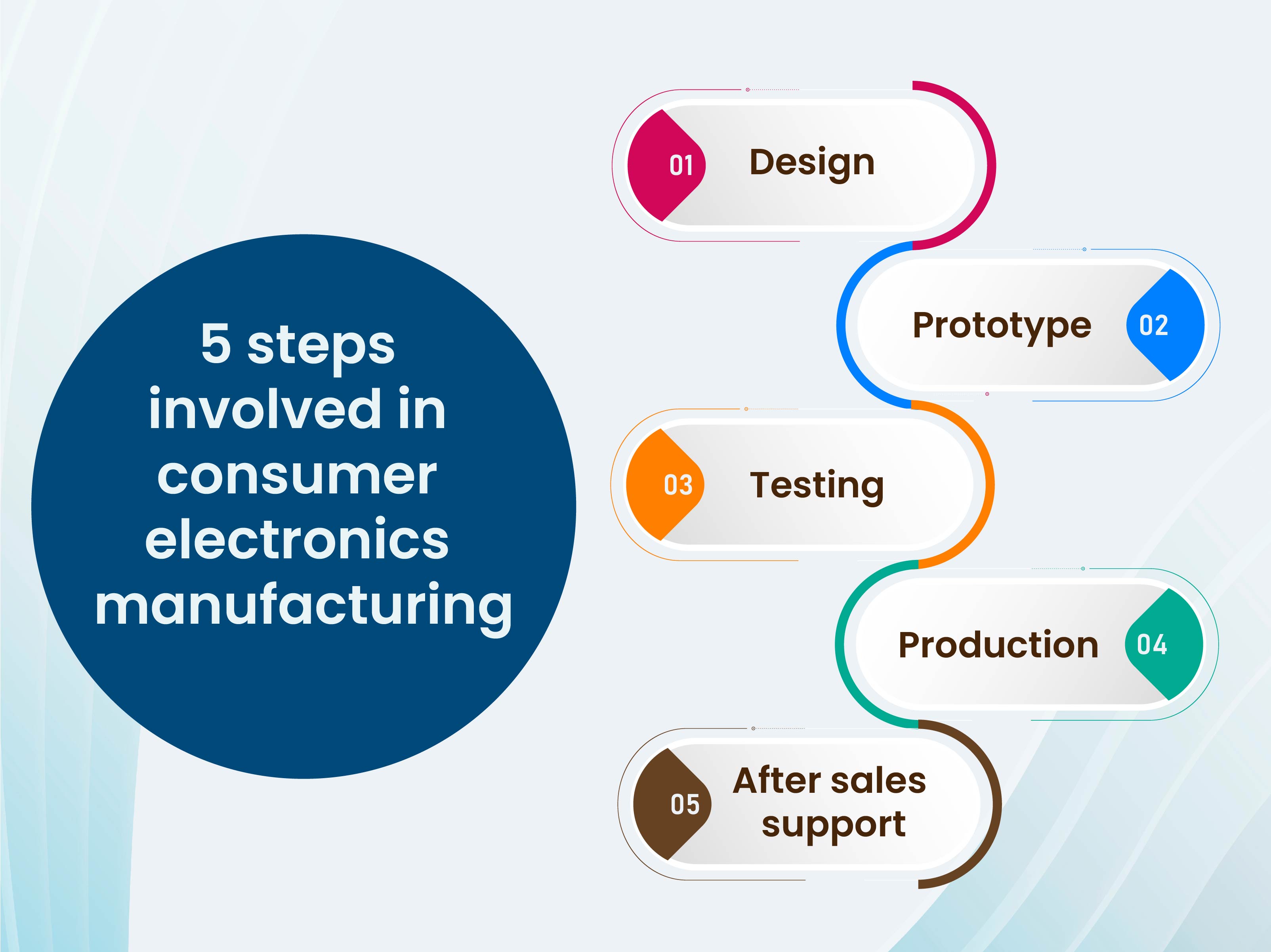Every manufacturing process is the perfect symphony of five main steps, which are design, prototyping, testing, production, and after-sales support. Almost every product’s fabrication has the same foundational procedures. The only thing that is different among these is that each of them includes numerous methods that require various levels of expertise. This is why many companies that are into manufacturing hire people from different fields based on their requirements.
Even at Radiant Appliances & Electronics, you can see that though we are also manufacturers, our focus is mainly on manufacturing consumer electronics, therefore we use different machinery and employ various experts based on product fabrication requirements. Today we will discuss how these experts put together product from the start of design to creating the finished product and delivering it the end user.

What are the steps involved in consumer electronics manufacturing?
1. Design
Forming your idea into a practical or functional sketch is known as "design for manufacturing." This requires an indepth understanding of the client idea. This is so the design engineer can sketch it into a final product. One of the best ways a client can help with creative work is by providing sufficient references and idea formats. Even a rough pencil drawing on paper can help further this process.
2. Prototype
Once the designs are finalised they will be sent forward for approval. Based on the input from the clients, a basic prototype of the product will be made. You might wonder, "Why would we waste time building a prototype instead of starting mass production?" This is because, though we know the design of the product is good, we need to ensure that it is producible. Hence, we make a prototype.
3. Testing
Based on how the prototype is produced, the testing phase of the electronic device begins. This includes everything from tests for wear and tear to durability, resilience, strength, and many more. The main purpose of these tests is to ensure that the product is safe for people to use and for the environment it is kept in. Extensive research and tests will be conducted to ensure that the product is worth the money.
4. Production
Depending on the product being made, the production process differs. Some of the common manufacturing types are job shop, discrete, batch process, and much more. Based on the product being fabricated, manufacturers pick the appropriate type of production process. One of the most common ones used for electronics manufacturing is batch process or continuous process manufacturing.
5. After-sales support
One of the best ways to ensure product as well as company growth is with the help of customer feedback, which is after-sales support. By being in communication with the end customers after the sale is complete, you are able to test the product's quality in real life and reducing the gap between manufacturers & end users.
Though the basics are the same, the intricacies within each of these production procedures vary on a huge scale. Which is why understanding their importance is essential. By understanding the procedure, you can relate to why manufacturing industry is one of the world's largest and most challenging. It also allows you get an insight into what a business should expect and can help with to fabricate their desired product. To know more about such industry topics, check out the Radiant blog today!